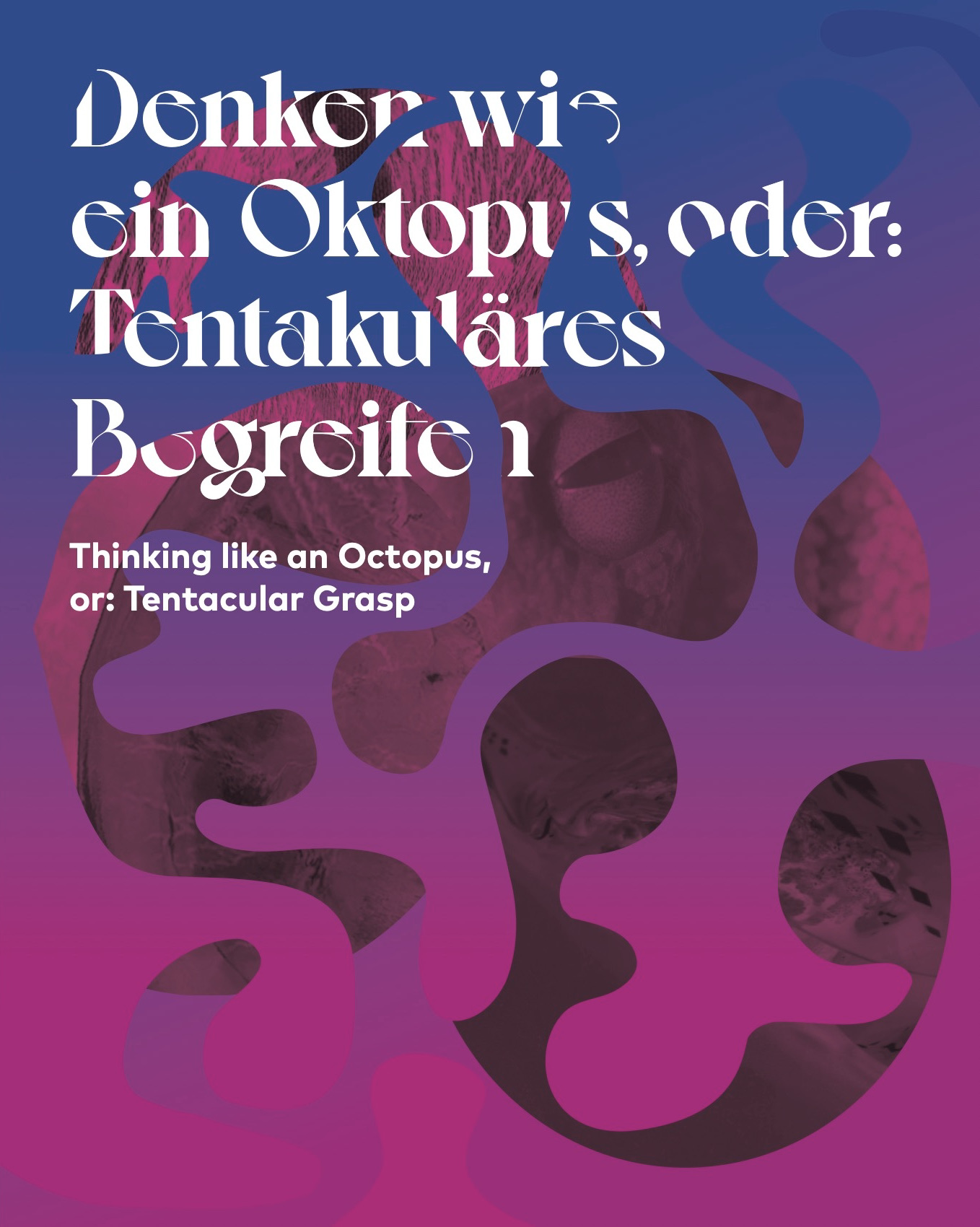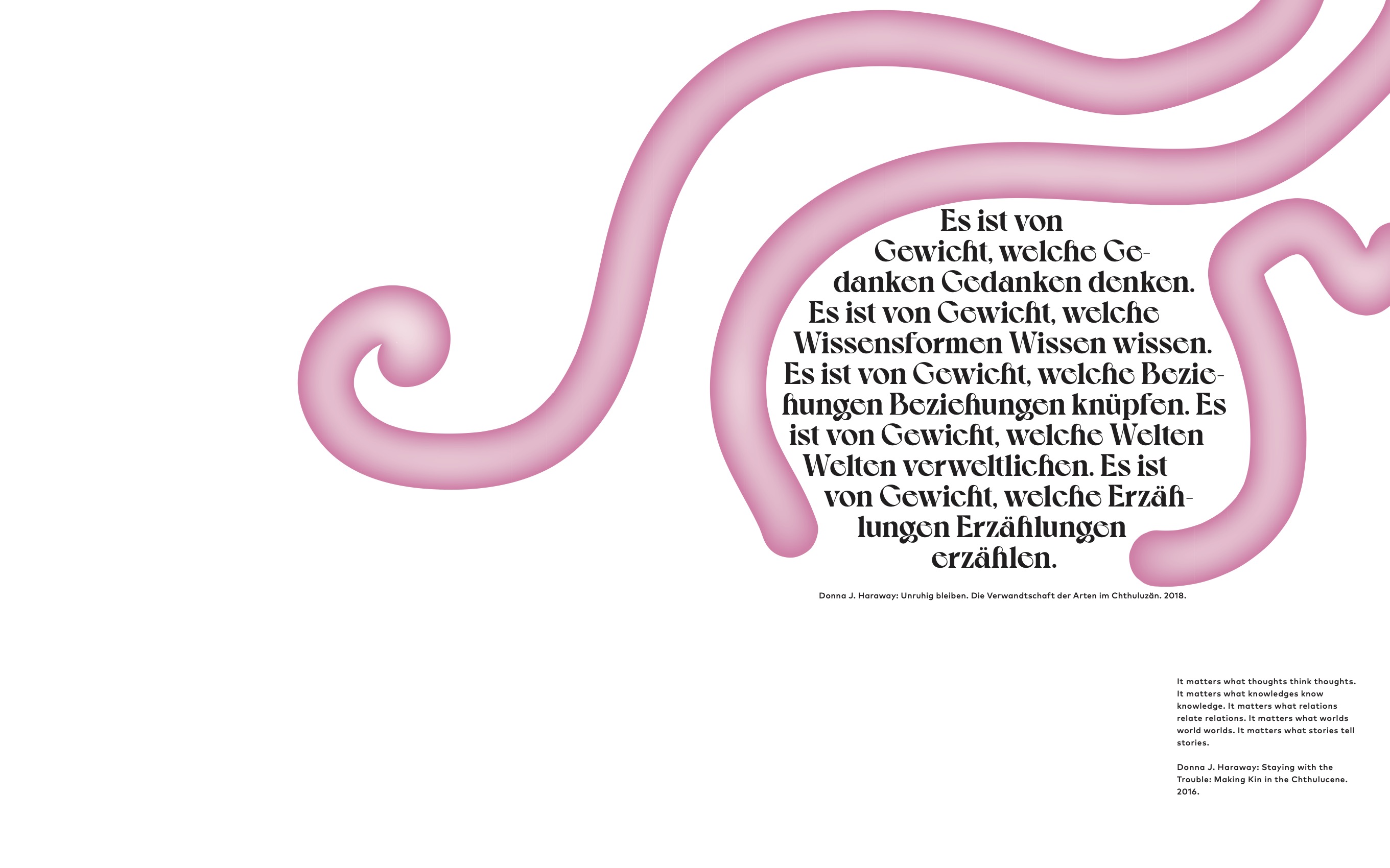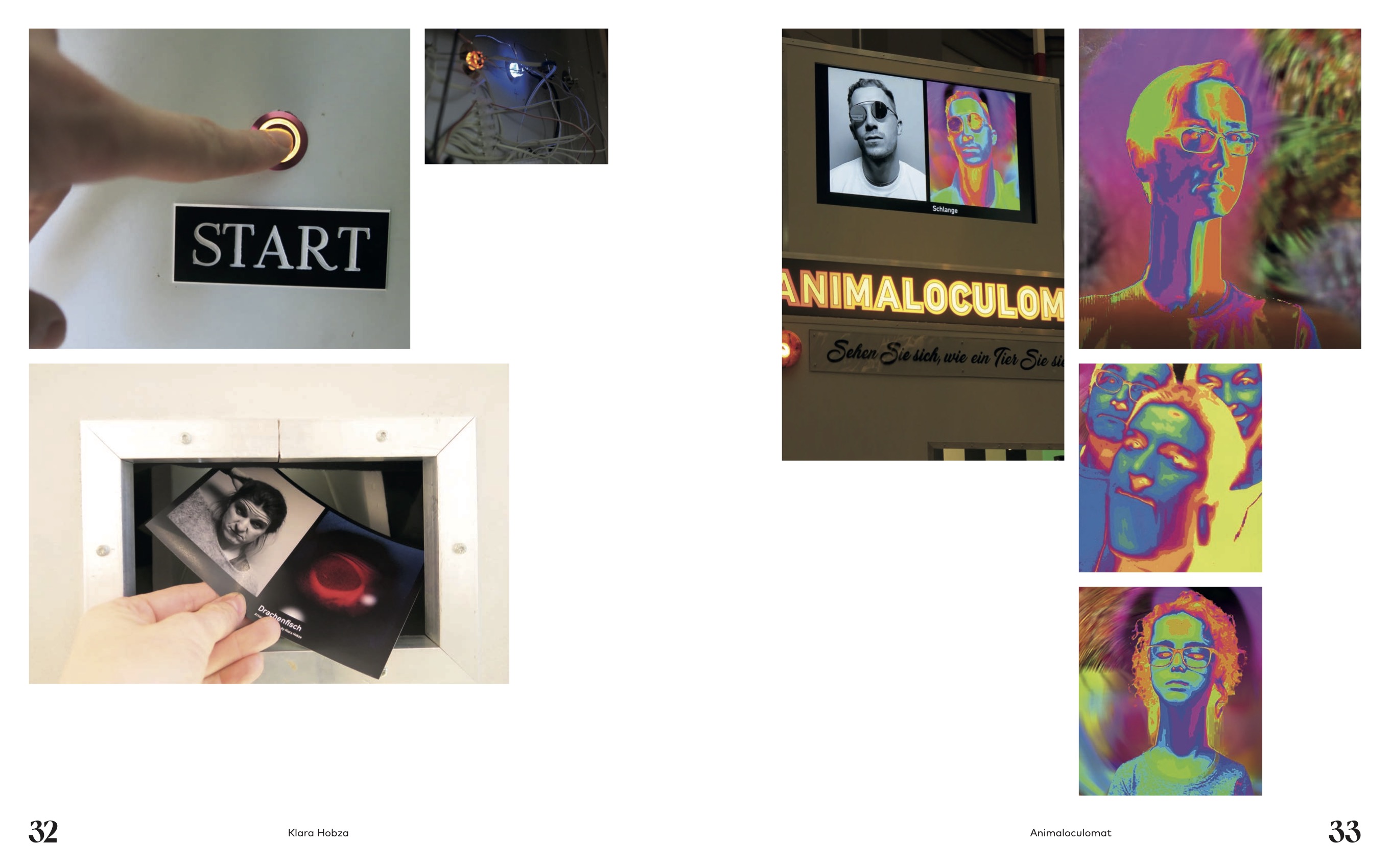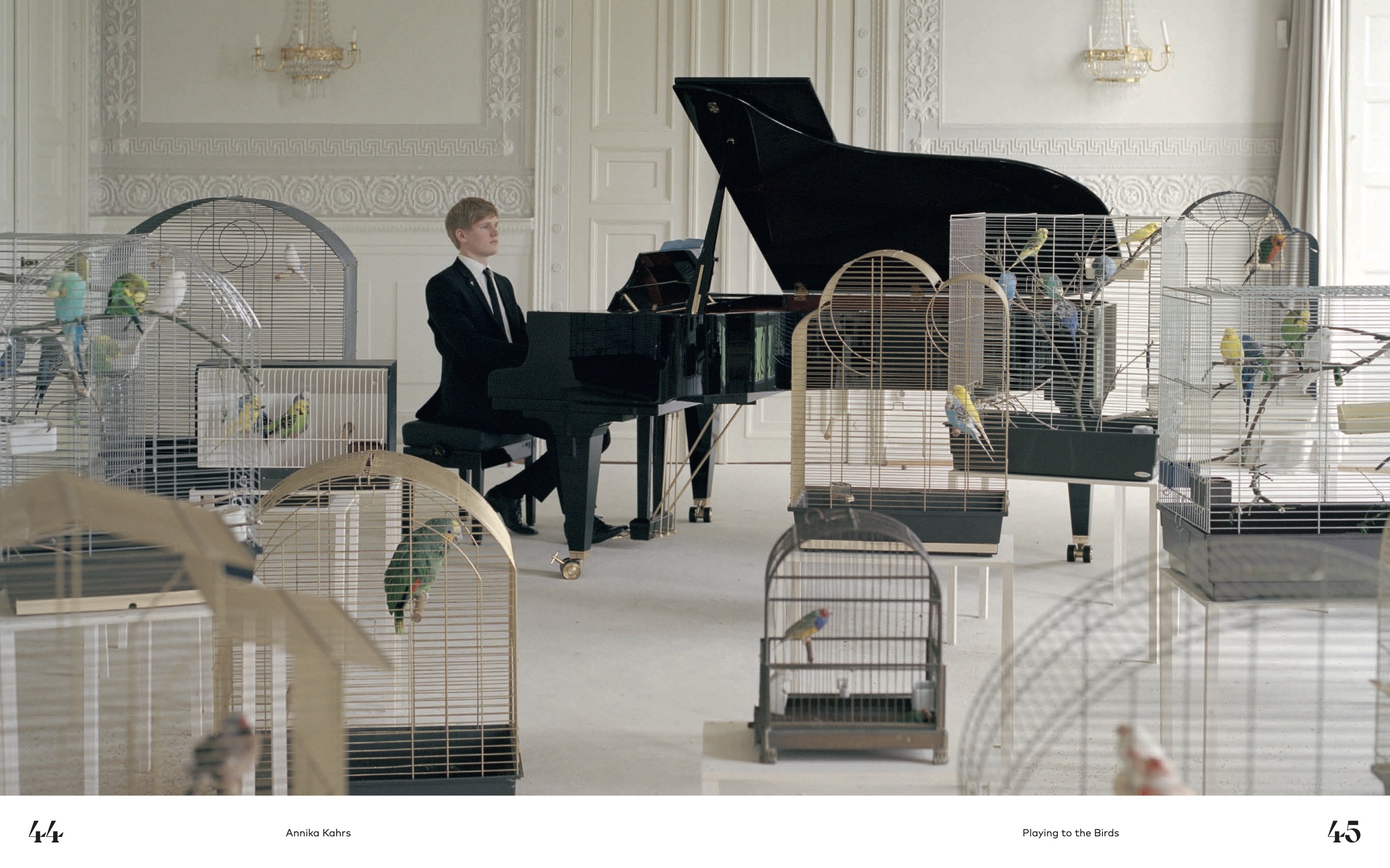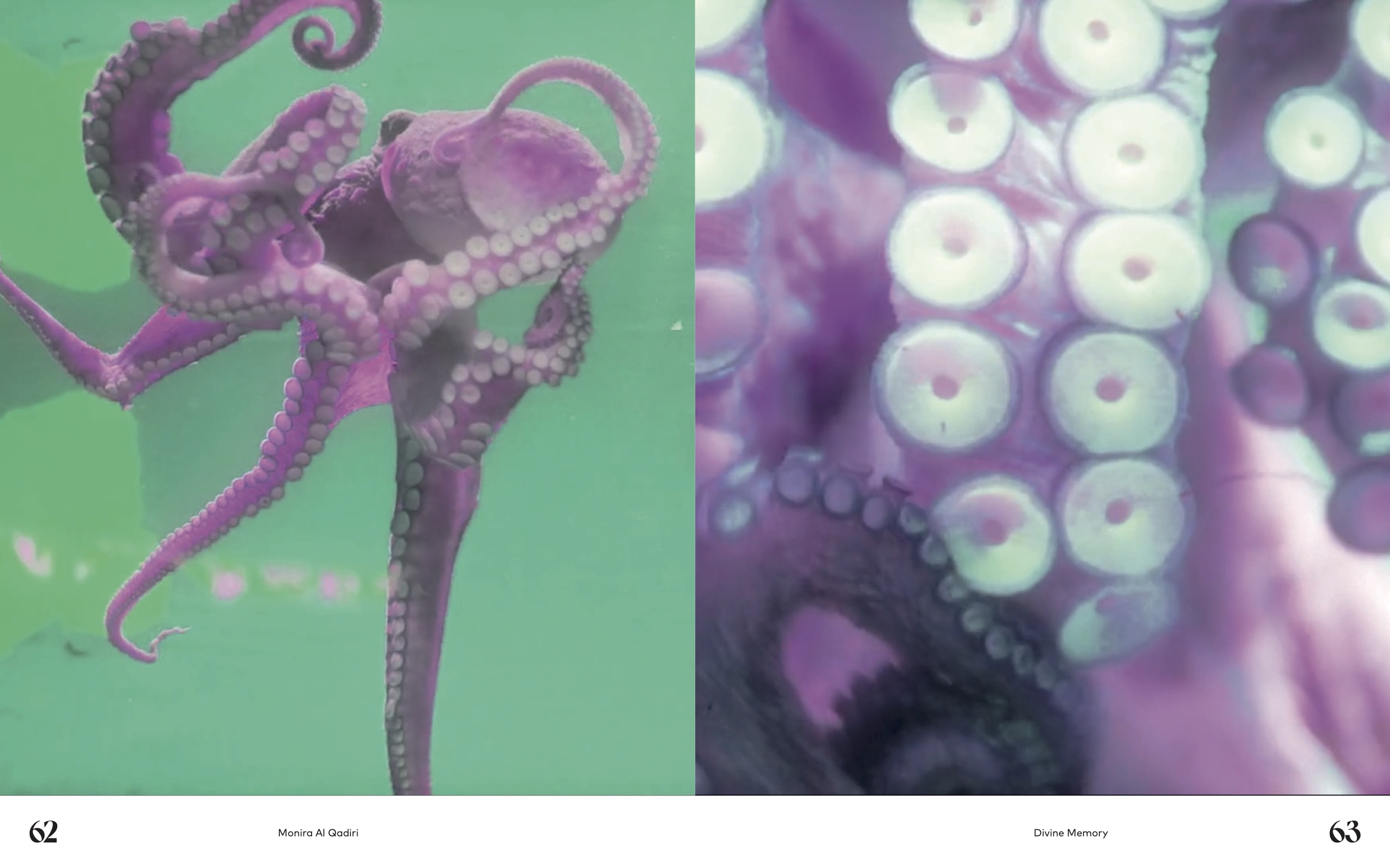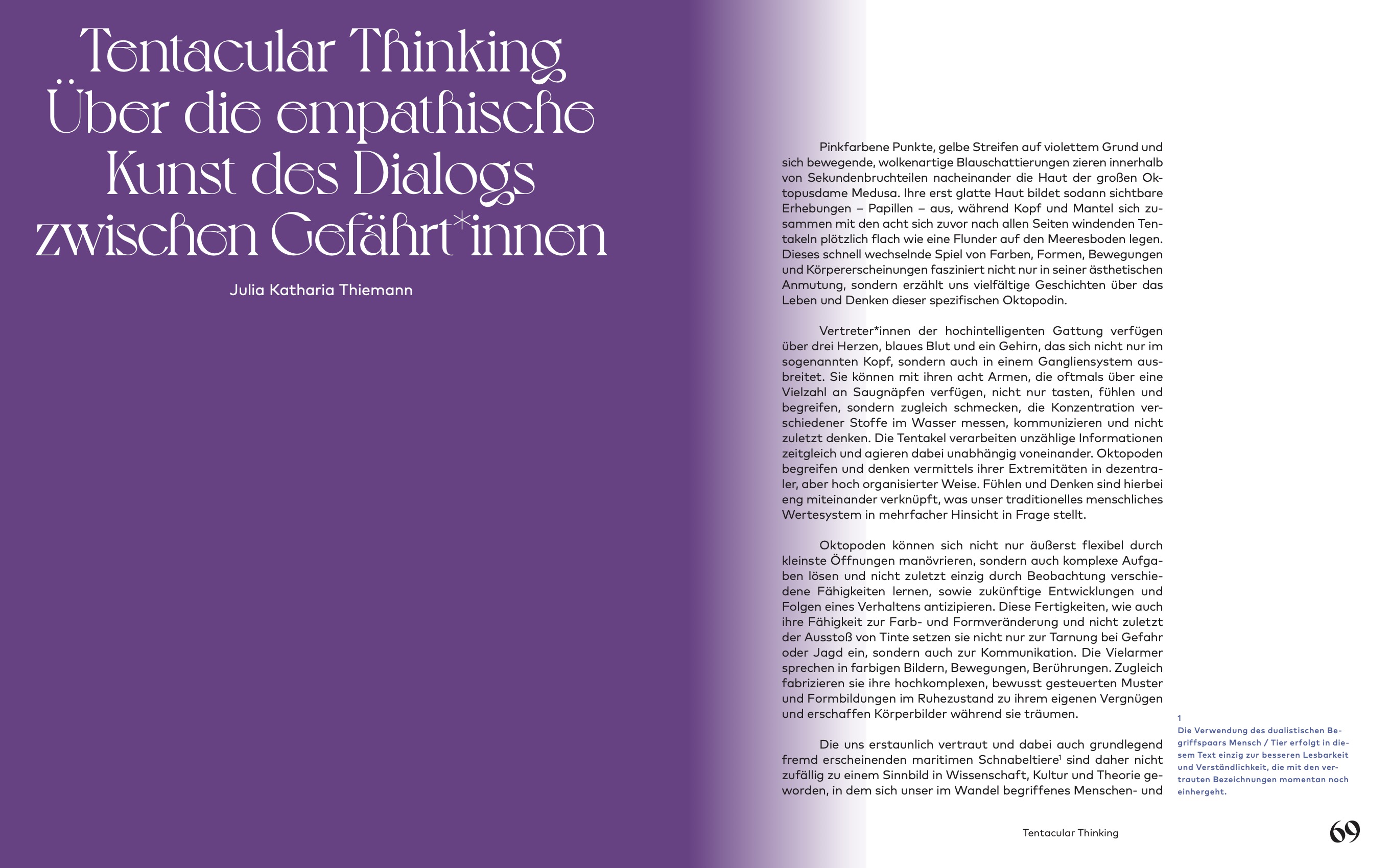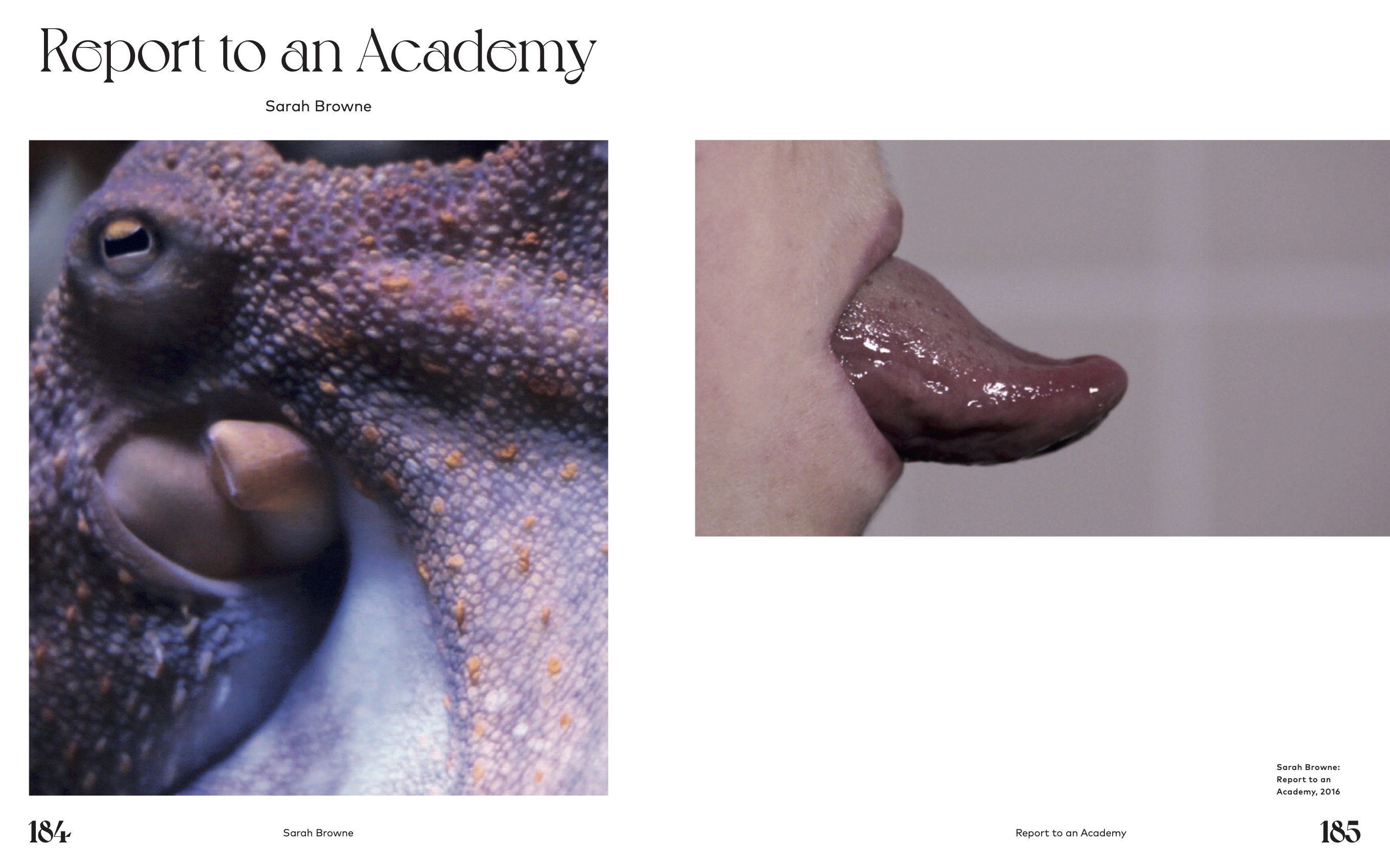Thinking like an Octopus, or: Tentacular Grasp
Wilhelm-Hack-Museum
-
EditorJulia Katharina Thiemann / Wilhelm-Hack-Museum
-
LanguageGerman/English
-
Format24 × 30 cm
-
Features224 pages, hardcover
-
ISBN978-3-95476-442-6
-
ReleaseNovember 2021
-
Price€36.00
(Post-)Humanismus: Das Genie der Tiere
Depending on the particular species and on how you count, an octopus’ brain consists of between fifty and seventy-five different areas. But most of the animal’s neurons are located not in its brain but in its tentacles. These peculiarities as well as the abilities to change color and shape and to eject ink not only allow the miraculous creatures to camouflage themselves in order to evade predators or baffle their prey; they also use them to communicate.
Humans have long drawn a sharp line between themselves and animals, arguing that we alone possess the gifts of thought and speech. In this age of the Anthropocene, however, our belief in our own superiority is increasingly in question. Can we be confident that animals are incapable of complex reasoning just because they do not speak our language? Are the languages of animals really so very different from our many human languages? What can we learn from animals, and should we expand our conception of democracy to include non-human life forms?
These questions are explored in the exhibition project Thinking like an Octopus, or: Tentacular Grasp. Building on the exhibition, the publication revisits these considerations as well as the philosopher of science, biologist, and literary scholar Donna J. Haraway’s seminal earlier theoretical ventures, mustering a wide range of visual art to interrogate the established relationship between humans and animals. With works by Monira Al Qadiri, Paulo Arraiano, Sarah Browne, Erik Bünger, Eli Cortiñas, Andreas Greiner, Klara Hobza, David Horvitz, Krõõt Juurak and Alex Bailey, Annika Kahrs, and Gretta Louw. In addition to excerpts from scientific writings and literature, the book includes essays by Eva Meijer, Julia Katharina Thiemann, and Michelle Westerlaken. With a foreword by René Zechlin.
